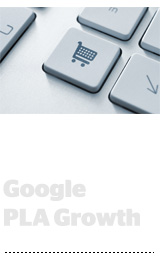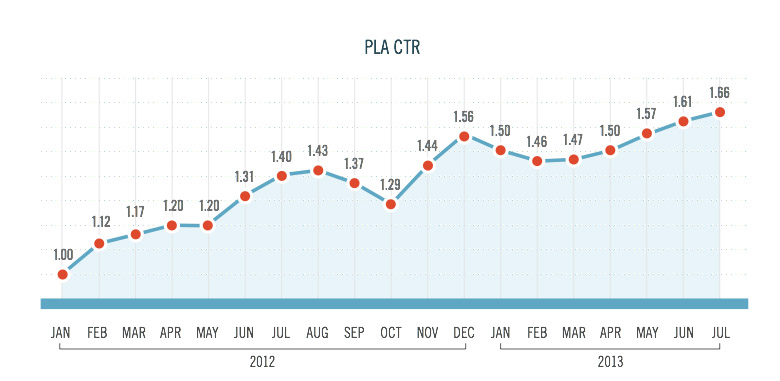 Close to a year after Google evolved its product search to a paid model under the auspices of Google Shopping, new data suggests the imagecentric ads are strongly outperforming standard text ads in retail advertising.
Close to a year after Google evolved its product search to a paid model under the auspices of Google Shopping, new data suggests the imagecentric ads are strongly outperforming standard text ads in retail advertising.
According to Marin Software‘s sampling of global advertisers and agencies that spend more than $100,000 on paid search per month, some of which manage $4 billion-plus in paid search spend annually, Product Listing Ads (PLAs) are picking up traction over traditional text ads, but have encountered some speed bumps along the way.
During the last holiday season, the ratio of PLAs to text ad impressions grew 60% between the months of September and December. PLA impressions have stalled a few times since then, experiencing a 13% drop in July.
“We believe that it’s due to the initial heavy influx of retailers [coming onboard] in Q4 of 2012,” commented Kye Mou, senior product marketing manager for Marin. “We saw a lot of retailers enter into the PLA landscape [then.] Because there’s now this sort of saturation of retailers, the number of ad impressions that Google is able to deliver and the number of ads available from retailers has hit a threshold.”
But, with Google’s update to AdWords with Enhanced Campaigns, retailers are able to target PLAs to consumers searching on mobile devices and that’s a “whole other inventory that Google is going to be able to monetize now,” Mou said. “Before, those ads didn’t appear and now they are, so that’s why we believe impression share is going to skyrocket heading into Q4, especially during the time when product-related searches are going to increase” during the holiday season.
In June and July 2013, click-through rates for PLAs were 21% higher than that of text ads, with CTRs increasing every month since February; retail marketers appear to be upping their investment in the ad unit, as well. Between October 2012 and July 2013, PLA spend increased 59%.
The primary reason why PLAs are hitting holiday volume during historically slower seasons is absolutely the return advertisers are seeing, Mou noted. “You’re paying less for this ad format and users are converting for product-related searches,” he said. “Not only are they cheaper, but they perform better … PLAs are where the retailers will get the most juice on their ad spend.”
On the consumer end, Mou added that because retailers now have to pay for placements and since Google has instated product feed requirements for merchant queries, descriptions and product landing pages are much more closely aligned to consumer intent.













